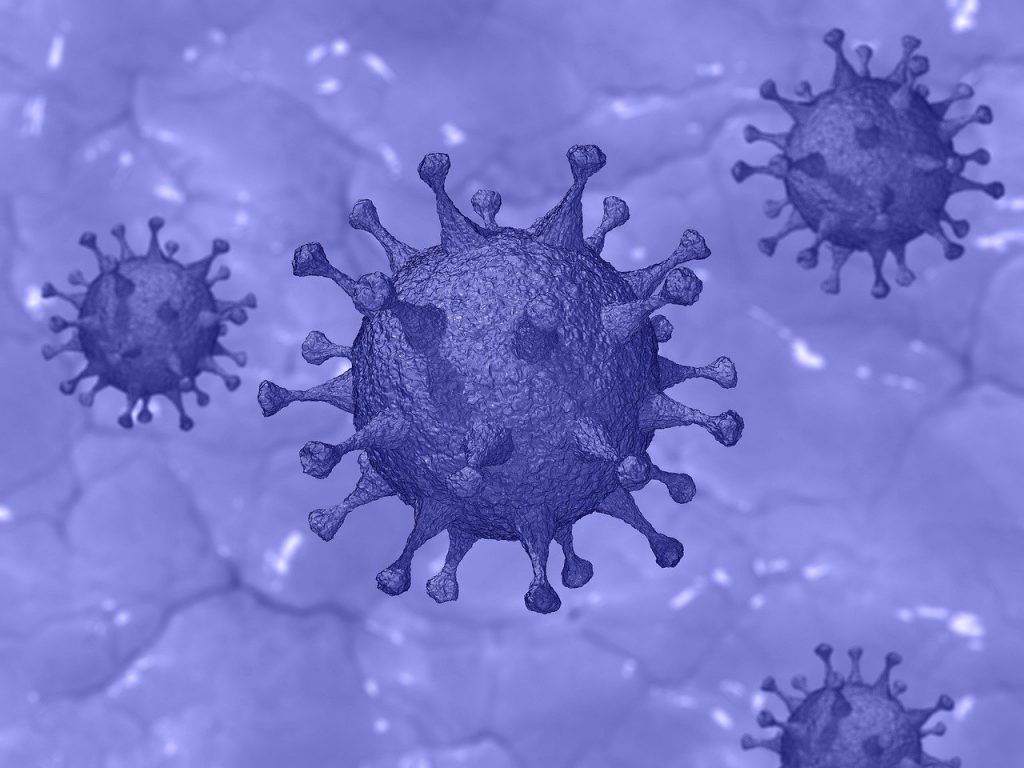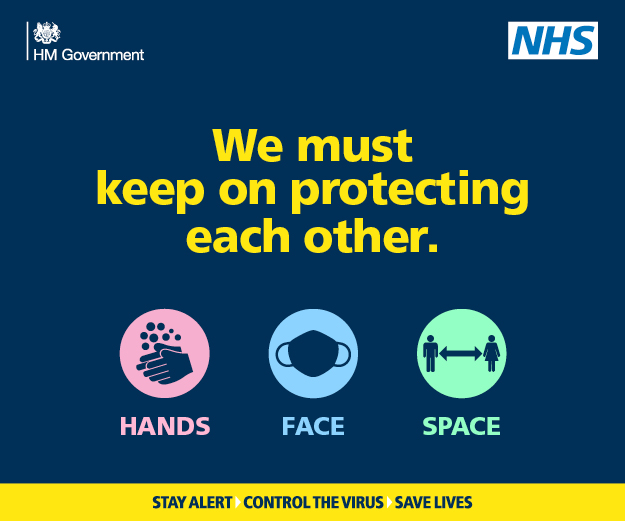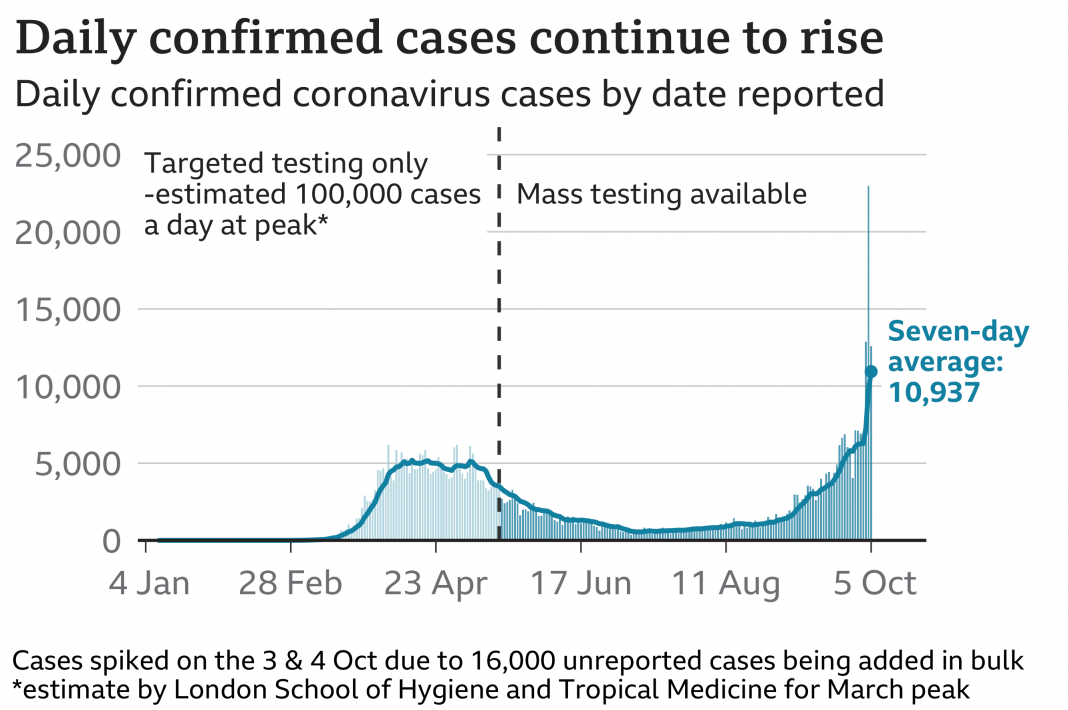Last week the prime minister said that “we have reached a perilous turning point” in the fight against Covid-19, with even suggestions that the police could call on military support as required. This week he talks of it being “bumpy to Christmas and beyond” with further lockdown restrictions, mostly affecting urban areas in the north of England, universities and schools.
There were also tighter rules covering the wearing of face coverings in more places by more people; restricted pub opening times, limits on weddings and higher fines for non compliance. He has also returned to the position where “those who are able to do so, should work from home” and, as the week progressed and some look forward to school half term, there is talk of a return to wider lockdown to limit social contact and therefore transmission.
The numbers
The chief medical officer has described “significant rates of transmission” (of Covid-19) in the UK, with the “great majority” of areas facing an increase. Locally what has yet to be explained though is the relatively low number of cases in Rother district.
Although now slightly increased – with low numbers in a Hastings school – numbers remain low at one of the lowest rates in England. The reproduction rate of Covid-19, known as the ‘R’ rate, for the Southeast as a whole is currently at the lower end of the range when compared with the rest of England.
Test and trace
While few would disagree that the challenges of starting the test and trace system from scratch are enormous, the high costs, the lack of apparent foresight, function errors and failures not only play to opponents but cause utter dismay to all those who just want an effective public service as part of the effort to halt transmission.

This week it was reported that some 16,000 positive cases of Covid-19 went unreported because of system failures. Now we learn that a shortage of vital supplies could ration or even halt tests in some areas.
Balancing lives with livelihoods
We all understand the difficult balance between stifling transmission of the virus (and preventing the NHS from being overwhelmed) and moving back to a second lockdown, causing more unemployment and deprivation. Even without lockdown the recent words of the chancellor have not helped the public mood: “I cannot save every business or every job”.
Although the prime minister has suggested that “probably… everybody got a bit complacent and blasé” over Covid-19, there is a growing opposition to the government’s broad strategy and handling. Opponents call for mitigation to be more precise, localised and importantly, endorsed by Parliament.
We can all see the effects on the high street. There are rising closures and increasing unemployment. From the ongoing work by Rye Mutual Aid, it is apparent that the disadvantaged are suffering the most – a fact confirmed locally by increasing demand on the Rye Food Bank.
Getting back to a new normal
Most of us desire to return to “normal freedoms”, even if as part of the “new normal”. For those without direct experience of the virus, it is perhaps human nature to put aside the images from earlier in the year of those in intensive care.
Although there are some who believe that Covid-19 is a hoax and that no more serious for the majority than a common cold, the worldwide evidence (over one million deaths) against this suggests that Covid-19 is bad.
Past experience of pandemics show that the Spanish Flu of 1918, the Hong Kong flu of 1968 and the Asian flu of 1957 were all bad, but it is only Covid-19 that has caused serious global disruption.
Long-term health effects
With an increasing backlog of demand for NHS services, it is important to discover the likely long term effects of the virus on all those who have been infected. A recent Parliamentary report suggests that there is emerging evidence of the long-term health effects of Covid-19, including respiratory complications, thrombosis, heart or kidney injury, fatigue, and joint and muscle pain. Work on this includes initiatives in UK, yet to conclude, such as the post-hospitalisation Covid-19 study and the Research and Innovation for post-Covid-19 Rehabilitation.
We know that all flu can be deadly, particularly for those with underlying health issues or who are overweight. We also know that the world is full of risks and we will all eventually die. However, we should all continue to do our utmost to ensure that as few as possible die from Covid-19.

Image Credits: BBC , UK Government .



